- Home
- Nathaniel Hawthorne
The Portable Hawthorne (Penguin Classics) Page 2
The Portable Hawthorne (Penguin Classics) Read online
Page 2
The tales led Hawthorne straight to The Scarlet Letter, his only novel written, as they are, entirely in his poetic style. Virtually every word in the story of Hester Prynne and Arthur Dimmesdale comes bearing another meaning, one that generations of readers have tried to capture in literal terms, but that has finally defeated every attempt to detach it from the figures that seem its only adequate means of expression. When all is said and done, perhaps the only way to say all that The Scarlet Letter does is to recite it verbatim. Hawthorne remembered doing just that, right after finishing the story. “I read the last scene to my wife,” he recalled some years later, “—tried to read it, rather, for my voice swelled and heaved, as if I were tossed up and down on an ocean, as it subsided after a storm. . . . I think I have never overcome my adamant in any other instance.”
Whatever meaning Hawthorne may have drawn from that reading—and conveyed to Sophia, who went straight to bed, he was pleased to note, with a sick headache—he never wrote another story like it. To avoid any risk of doing so, he wrote only one more tale, “Feathertop,” which is really an allegorical caricature of the man he blamed for his dismissal from the Salem Custom House, and went back to writing romances in the formerly discarded manner of Fanshawe: stories about the (managed) triumph of innocence over guilt; all of them employing essentially the same characters and beefed up to salable girth with larger and larger helpings of journalistic copy.
During the seven years he spent in Europe, between The Blithedale Romance and The Marble Faun, Hawthorne turned exclusively to writing a journal of his travels and sightseeing in England and on the Continent. He had always kept a notebook of ideas for stories, but now he took to writing long descriptive entries, volumes of them, all in an essayistic style as pure, in itself, as the poetic style of The Scarlet Letter. Upon his return to America, he tried writing fiction again in the long-dormant emblematic style of the tales but found himself unable to finish anything. Seemingly arbitrary and factitious, rather than necessary to the expression of the writer’s inchoate ideas, his emblems mean next to nothing—either to the reader or, apparently, to the writer.
Journalism, on the other hand, continued to flow from his pen with seeming ease. While revising sections of his English journals, first for serial publication, then together in the volume called Our Old Home, he recorded a visit to Washington, D.C., and the battlefields of Virginia for Atlantic Magazine. In steady decline since The Scarlet Letter, the poetic style was dead by 1862, as he himself would be less than two years later. Whether that cryptically eloquent language perished because Hawthorne’s health was failing or he wasted away because it had is not an altogether impudent question. It was, as he insisted, the “essential” part of himself—the part he lived entirely in words.
From the moment that Hawthorne began signing his works, each new publication made his name better known, increasing his fame as the basis for it expanded. Over the last few decades, however, that foundation has been steadily shrinking until his fame now rests almost entirely on a few tales and The Scarlet Letter. Without those, he would lie in the graveyard of defunct literary reputations, alongside scores of writers famous in their day but of interest now only to historians of literary taste. Instead, he stands as firmly today on the pedestal of literary renown—if for somewhat different reasons—as he did in the 1860s.
The question is, what keeps the tales and The Scarlet Letter flying out of the bookstores when Evangeline, a poem that made Longfellow rich, has gone out of print, and when the terms predominant in Hawthorne’s great works—sin, guilt, confession, innocence—have lost virtually all but their legal meanings? What interest, for that matter, can a contemporary reader take in the writings of a man addicted to the sentimental grotesqueries of gothic fiction, frightened to death of female sexuality, indifferent to slavery, hostile to Jews, obsessed with respectability, and given to incessant moralizing? If “Art,” as Ezra Pound said, is “news that stays news,” what remains newsworthy about the naughty midnight rambles of Goodman Brown or the adultery of Hester Prynne?
If the persistent appeal of the tales and The Scarlet Letter can be located anywhere in particular, it must be said to lie in the combined stylistic economy and semantic resonance of Hawthorne’s undiluted poetic voice and the unplumbed mystery this language evokes—an unspoken, otherwise unspeakable subject that lurks behind the veil of every announced concern, begging to be called forth yet refusing all invitations to make itself known. This, at any rate, is what sustains our interest in things like Blake’s tiger, Coleridge’s ancient mariner, Melville’s whale, Whitman’s soul, Wallace Stevens’s emperor of ice-cream, and T. S. Eliot’s children in the trees. These are, as Eliot put it, all symbols of “the depths of feeling into which we cannot peer.”
While the tales and The Scarlet Letter are more than enough to keep the name Hawthorne alive all by themselves, we should remember that this Hawthorne has a fraternal twin: the “man of society” who wrote the sketches, allegories, and prefaces; who found the tales inscrutable and The Scarlet Letter too somber; who supplied reams of padding for the published romances; and who went on publishing journalism when the “secluded man” had forgotten how to converse with “his own mind and heart.” Above all, this is the Hawthorne who amassed the European journals, long buried in manuscript collections or available only in edited selections but now widely available in three hefty volumes of The Centenary Edition. The Hawthorne on display here is the one his family and friends were permitted to know: clearheaded, witty, opinionated, moody, fiercely judgmental, and bent on speaking his mind on every subject as plainly as possible.
Although readers of these two Hawthornes have tended to call one of them or the other the “real” Hawthorne, there is really no reason to take sides in the matter. Poet, journalist: each of these Hawthornes has his peculiar merits—profound genius on the one hand, dazzling skill on the other. Hawthorne himself could not finally choose between them. To the “man of society,” the phantoms of the haunted mind seemed merely hallucinatory. To the secluded dreamer, the “ordinary” world seemed superficial, incomplete. Rather than silence one or the other of these contestant voices, he spent much of his career looking for a way to wed them, thus to produce a complete being at once true to itself and fully acceptable to society. Whether that entailed burrowing far enough into himself to rediscover the outside world in an altogether new light or allowing himself to be rescued from the dungeon of his heart by a dovelike woman, he could never finally decide. Neither, then, should the reader who wants to know all of Nathaniel Hawthorne there is to be known.
Except for his brief and shadowy apprenticeship, as recorded in Fanshawe—a book best left to specialists—the moving story of Hawthorne’s writing life, as it looks from this time and place, unfolds in the selections for this volume: his rise to literary eminence in the tales, his arrival at that artistic pinnacle in The Scarlet Letter, his decline as a writer of fiction in his next three published romances, his emergence as a top-flight essayist in the European journals, and, in his last years, his collapse as a romancer in the unfinished stories, despite his undiminished vitality as a journalist in his very last publications.
A lot has happened to “Nathaniel Hawthorne” since Malcolm Cowley compiled the first Portable Hawthorne back in 1948, much of it since 1969, when Cowley revised and expanded his original edition to take advantage of recent scholarship. On the supply side, volumes of material then held in manuscript collections have become generally available in the now complete Centenary Edition of the Works, sharpening Hawthorne’s authorial profile. On the receiving end, Hawthorne’s readership has changed even more, rethinking what it is that lends a writer the sort of status these Portables recognize and foster. Whereas Cowley could pretty much assume widespread agreement among his readers regarding Hawthorne’s literary greatness, today’s editor, owing to the recent proliferation of critical schools and of materials deemed worthy of literary regard, can count on no such unanimity of opinion. What could once
be taken for granted must now be argued for and demonstrated: Hawthorne’s continuing, if somewhat altered, claims upon the notice and admiration of serious, attentive readers.
Chronology
1804 NH born in Salem, Massachusetts, to Nathaniel and Elizabeth (Manning) Hathorne, two years after his sister Elizabeth.
1808 His sea-captain father dies of yellow fever in Surinam. His younger sister, Louisa, is born, and the family moves in with grandfather Richard Manning, in Salem.
1813 Uncle Robert Manning becomes guardian to the family on the death of Richard. NH is laid up at home for more than two years with an injured foot.
1818-20 The Hathornes move to the Manning farm in Raymond, Maine. NH away at school in Portland and Salem.
1821-25 NH completes his A.B. degree at Bowdoin College, where he makes lifelong friends of Franklin Pierce, Henry Wadsworth Longfellow, and Horatio Bridge. He returns to Salem after graduation to live with his mother and sisters.
1828 NH publishes Fanshawe anonymously at his own expense, then recalls it, never to mention it again.
1829-35 Now spelling his name Hawthorne, NH publishes a dozen or so tales and sketches in various periodicals, at first anonymously or pseudonymously, eventually signed.
1836 NH moves to Boston to become editor of The American Magazine of Useful and Entertaining Knowledge, which soon folds, sending NH, unpaid, back to Salem. With his sister Elizabeth, he writes Peter Parley’s Universal History, On the Basis of Geography.
1837 Twice-told Tales, his first collection of short pieces, is published, with a secret subvention from Horatio Bridge. NH meets Sophia Peabody, his future wife. He begins to publish in the Democratic Review.
1839 NH returns to Boston as measurer in the customhouse there. He proposes to Sophia.
1840 He completes three books for children: Grandfather’s Chair, Famous Old People, and Liberty Tree.
1841 He resigns from the Boston Custom House and returns to Salem. He joins the utopian community at Brook Farm, in West Roxbury, Massachusetts, in search of an affordable residence for himself and Sophia, but leaves before the year is out.
1842 NH and Sophia marry and move into the Old Manse, in Concord, Massachusetts. An expanded edition of Twice-told Tales is published.
1844 The Hawthornes’ first child, Una, is born at the Old Manse.
1845 NH edits Horatio Bridge’s Journal of an African Cruiser. The Hawthornes move back to Salem.
1846 NH appointed surveyor at the Salem Custom House. The family moves to Boston, where their second child, Julian, is born, then once again back to Salem. Mosses from an Old Manse is published.
1849-50 NH is dismissed from the Salem Custom House. He attends his mother’s death. The Scarlet Letter, with “The Custom House” as a preface, is published. NH moves his family to Lenox, Massachusetts. There he meets Herman Melville, who soon reviews Mosses for Literary World. Two of his children’s books are reissued under a new title.
1851 NH publishes the third edition of Twice-told Tales, with a preface; The House of the Seven Gables; The Snow-Image and Other Twice-told Tales, dedicated to Horatio Bridge; and A Wonder Book for Girls and Boys. Melville dedicates Moby-Dick to NH. After the birth of their third child, Rose, the Hawthornes move yet again, to West Newton, Massachusetts.
1852 NH publishes The Blithedale Romance, set at Brook Farm, and a campaign biography of his Bowdoin classmate Franklin Pierce, soon to be elected president of the United States. NH’s younger sister, Louisa, is killed in a steamboat accident. The Hawthornes buy their first home, in Concord, Massachusetts, and move in.
1853 NH publishes Tanglewood Tales for children. He is appointed U.S. consul in Liverpool.
1853-57 NH begins the journals he will keep throughout his stay in Europe. He travels widely in Britain during times away from the Consulate. Sophia spends months in Portugal and Madeira for her health. Mosses from an Old Manse is reissued in an expanded edition, in 1854. NH is visited by Melville, on his way to and from the Holy Land.
1858-59 Having resigned as consul, NH travels with his family to France, Italy, and Switzerland, staying for more than a year in Rome and Florence, where he meets expatriate American artists, Robert and Elizabeth Barrett Browning, and William Cullen Bryant. Begins a romance set in England, then drops it to begin The Marble Faun. Una is dangerously ill with malaria.
1859-60 NH returns to England, where he finishes The Marble Faun before sailing for America.
1860-62 Back at the Wayside in Concord, Massachusetts, he resumes work on his English romance but abandons it after two more drafts to start another, on the elixir of life, which he also abandons. He visits Washington, D.C., and Civil War battlefields in Virginia. “Chiefly About War Matters” is published in Atlantic Monthly.
1863 NH publishes Our Old Home, a collection of revised portions of his English journals, dedicated to Franklin Pierce, now in political disgrace for his attempts to avert the Civil War.
1864 NH’s declining health prevents further work on “The Elixir of Life.” After his death, during a tour of New Hampshire with Pierce, a portion of that unfinished romance appears in Atlantic Monthly entitled “Scenes from ‘The Dolliver Romance.’ ”
I
THE TALES 1830-1852
EDITOR’S NOTE
When Fanshawe failed to satisfy either the public or himself, Hawthorne turned to writing short pieces for magazines. His reasons for this change in literary form were partly commercial. In a publishing market glutted with pirated English novels, the periodicals offered an unknown American writer a more likely medium of exposure and source of income.
At the same time, Hawthorne’s motives for the switch seem to have been artistic. Fanshawe had shown the “man of society” to be reluctant or unable to tell stories of a sort Hawthorne felt increasingly driven to write: stories seeking answers to moral problems, instead of illustrating foregone conclusions. His public voice could say, either openly or disguised in metaphors, things familiar and agreeable to both the speaker and his audience. But only the “talk of a secluded man with his own mind and heart” could look deeply into his imaginings in hopes of discovering there what one of his characters calls “some master-thought, that should guide me through this labyrinth of life, teaching me wherefore I was born, and how to do my task on earth, and what is death.” Let the “man of society” entertain and instruct the public with sketches and allegories; the “secluded man,” conversing with himself, would seek, “with an emblematic divining-rod . . . for emblematic gold—that is for Truth—for what of Heaven is left on earth.”
Whether because that divining rod was the wrong tool for the job or because no such Truth exists to be discovered, none of Hawthorne’s tales quite succeeds in this sublime artistic undertaking. In almost every case, the tales leave their protagonists alone and unhappy for having made a choice that seemingly would have left them no better off had they chosen otherwise. Would Robin have succeeded in his quest for the help of his kinsman Major Molineux had he believed the major’s seductive housekeeper instead of “shrewdly” running away? Would Dorcas have married Reuben Bourne if he had immediately dispelled her mistaken notion of him as a hero? Should young Goodman Brown have remarried Faith at the devil’s altar instead of remaining forever estranged from her? Parson Hooper and Richard Digby spurn the women who love them. Would they have done better to abandon their self-isolating quests? Should Aylmer and Giovanni have accepted their tainted loved ones as is, at the cost of accepting what Georgiana’s bloody hand and Beatrice’s poisonous breath seem to portend?
Each of these tales ends with something that sounds like a moral lesson the story was written to illustrate. Never, though, do these explanations answer the many questions the stories raise. Who is that unnamed stranger who joins Robin at the end of the story to witness the disgrace of Major Molineux and deliver the moral? How, exactly, will killing his son enable Reuben Bourne to tell Dorcas the truth at long last? Is it better to accept and display one’s secret sins, as Pars
on Hooper does, or to deny them, as Goodman Brown must? Who is the villain, Rappaccini for his “experiment” or Baglioni for his meddling?
Hawthorne’s tales have often been admired for their proto-modernist ambiguities, and they might well no longer be read were they as easily understood as the sketches or as readily decoded as the allegories. Ambiguity, however, is the last thing Hawthorne wanted. It is, rather, the very problem he gave his stories to solve. “It is not that I have any love for mystery,” he wrote to Sophia, “but because I abhor it—and because I have felt a thousand times, that words may be a thick and darksome veil between the soul and the truth it seeks.”
As long as the truth remains veiled in words, however, only in that veil can it be glimpsed, now and then, darkly glimmering. In one of Hawthorne’s tales not included in this volume, a man tells his female companion a densely emblematic, highly suggestive story about an antique ring. At its conclusion, the woman asks what the ring stands for. Clearly annoyed, the man answers, “You know that I can never separate the idea from the symbol in which it manifests itself.” And when she persists, he puts her off with a moral interpretation much like those that conclude so many of Hawthorne’s tales, thus stilling her anxiety without really explaining anything that makes the story compelling. For the “man of society,” emblems may be useful or unnecessary. For a “secluded man” conversing with himself, emblems are “essential.” They are, as Hawthorne once put it, “the heart’s native language.”
Arranged in this section in the order of their first publication are some of Hawthorne’s best-known, because most darkly suggestive, tales, along with a passage from “The Old Manse” and the other two prefaces (both in full) he wrote for collections of his short pieces.

 The Scarlet Letter
The Scarlet Letter Young Goodman Brown : By Nathaniel Hawthorne - Illustrated
Young Goodman Brown : By Nathaniel Hawthorne - Illustrated The Birthmark
The Birthmark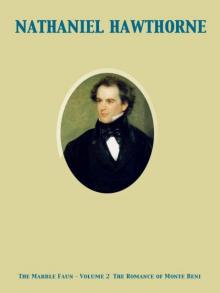 The Marble Faun; Or, The Romance of Monte Beni - Volume 1
The Marble Faun; Or, The Romance of Monte Beni - Volume 1 The Minister's Black Veil
The Minister's Black Veil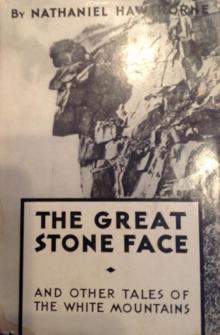 The Great Stone Face, and Other Tales of the White Mountains
The Great Stone Face, and Other Tales of the White Mountains The House of the Seven Gables
The House of the Seven Gables The Snow Image
The Snow Image The Blithedale Romance
The Blithedale Romance Rappaccini's Daughter: By Nathaniel Hawthorne - Illustrated
Rappaccini's Daughter: By Nathaniel Hawthorne - Illustrated Twice-Told Tales
Twice-Told Tales Twice Told Tales
Twice Told Tales The Marble Faun; Or, The Romance of Monte Beni - Volume 2
The Marble Faun; Or, The Romance of Monte Beni - Volume 2_preview.jpg) Footprints on the Sea-Shore (From Twice Told Tales)
Footprints on the Sea-Shore (From Twice Told Tales) Main Street
Main Street_preview.jpg) The Seven Vagabonds (From Twice Told Tales)
The Seven Vagabonds (From Twice Told Tales) Fanshawe
Fanshawe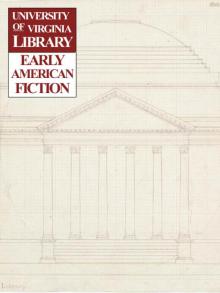 Chippings with a Chisel
Chippings with a Chisel Selected Tales and Sketches
Selected Tales and Sketches Young Goodman Brown
Young Goodman Brown Roger Malvin's Burial
Roger Malvin's Burial The Prophetic Pictures
The Prophetic Pictures The Village Uncle
The Village Uncle Scarlet Letter (Barnes & Noble Classics Series)
Scarlet Letter (Barnes & Noble Classics Series) The Procession of Life
The Procession of Life Drowne's Wooden Image
Drowne's Wooden Image Hawthorne's Short Stories
Hawthorne's Short Stories My Kinsman, Major Molineux
My Kinsman, Major Molineux Legends of the Province House
Legends of the Province House Foot-Prints on the Sea-Shore
Foot-Prints on the Sea-Shore The Haunted Quack
The Haunted Quack Tanglewood Tales
Tanglewood Tales The Seven Vagabonds
The Seven Vagabonds Mosses from an Old Manse, Volume 2
Mosses from an Old Manse, Volume 2 The Canterbury Pilgrims
The Canterbury Pilgrims Wakefield
Wakefield The Gray Champion
The Gray Champion The White Old Maid
The White Old Maid The Snow-Image: A Childish Miracle
The Snow-Image: A Childish Miracle The Gentle Boy
The Gentle Boy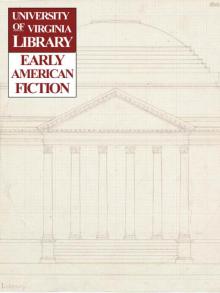 Mr. Higginbotham's Catastrophe
Mr. Higginbotham's Catastrophe![The Threefold Destiny: A Fairy Legend, by Ashley Allen Royce [pseud.] Read online](http://i1.bookreadfree.com/i2/04/10/the_threefold_destiny_a_fairy_legend_by_ashley_allen_royce_pseud__preview.jpg) The Threefold Destiny: A Fairy Legend, by Ashley Allen Royce [pseud.]
The Threefold Destiny: A Fairy Legend, by Ashley Allen Royce [pseud.] Lady Eleanore`s Mantle
Lady Eleanore`s Mantle The Great Carbuncle
The Great Carbuncle The Portable Hawthorne (Penguin Classics)
The Portable Hawthorne (Penguin Classics)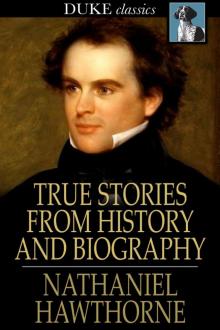 True Stories from History and Biography
True Stories from History and Biography